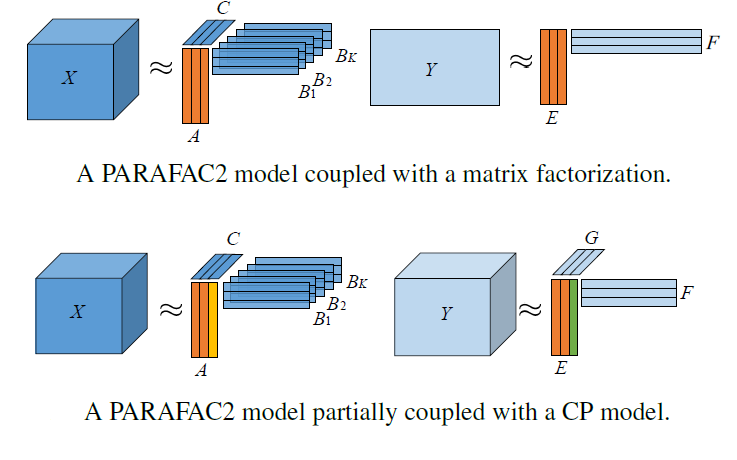PARAFAC2-based CMTF
The PARAFAC2 model is a promising model due to its flexibility and capability to handle irregular/ragged tensors. While data fusion models based on a PARAFAC2 model coupled with matrix/tensor decompositions have been recently studied, they are limited in terms of possible regularizations and/or types of coupling between data sets.
In our recent paper, we propose an algorithmic framework for fitting PARAFAC2-based CMTF models with the possibility of imposing various constraints on all modes and linear couplings, using Alternating Optimization (AO) and the Alternating Direction Method of Multipliers (ADMM).
We show that such models can be useful in terms of jointly analyzing dynamic and static data by revealing evolving patterns and improving clustering performance, as well as facilitating interpretability through constraints.
The paper is now on arXiv and will soon appear at ICASSP 2023.
C. Schenker, X. Wang, E. Acar. PARAFAC2-based Coupled Matrix and Tensor Factorizations, ICASSP (to appear), 2023
The code has been released on GitHub as a part of our data fusion framework.

